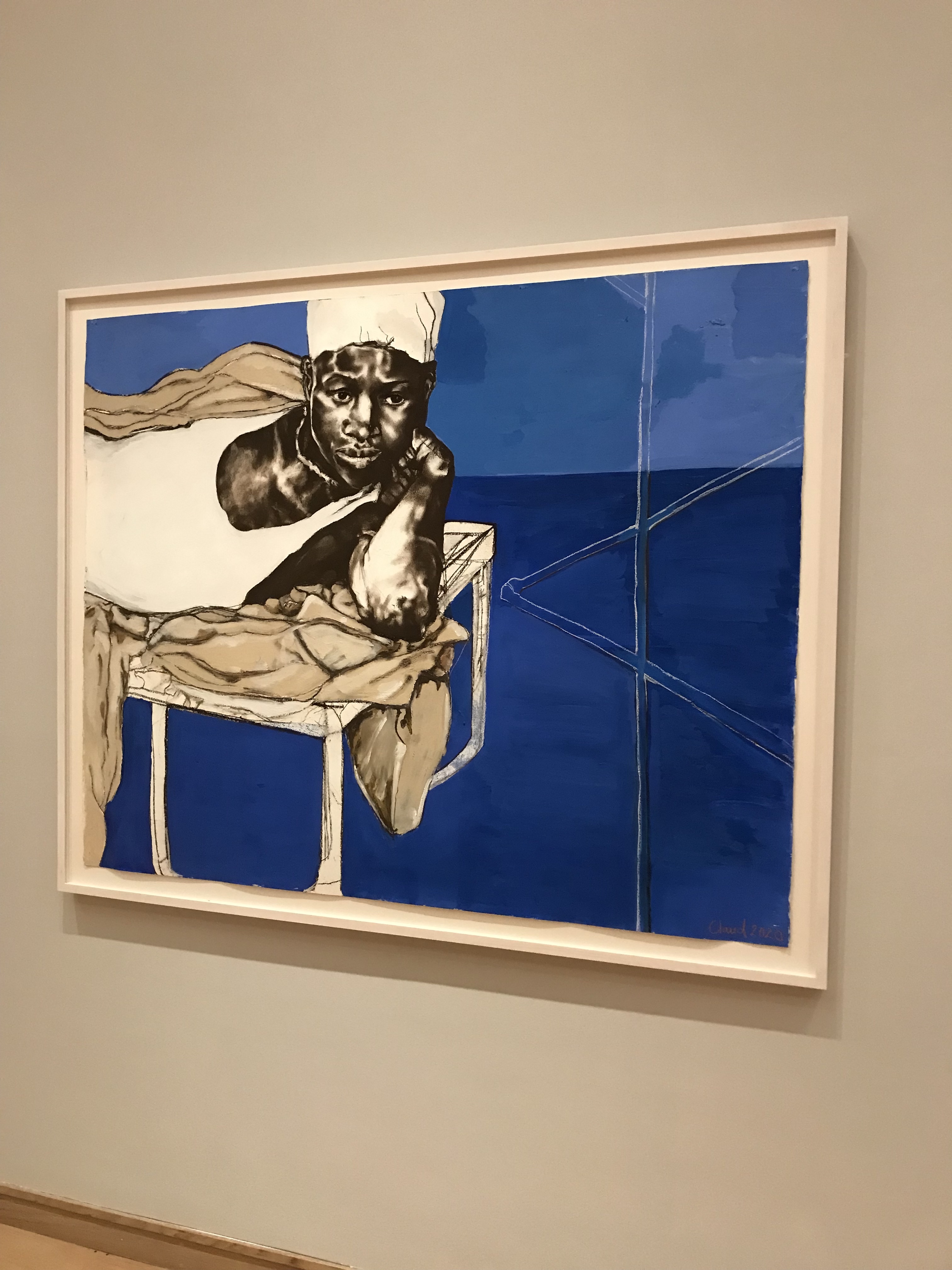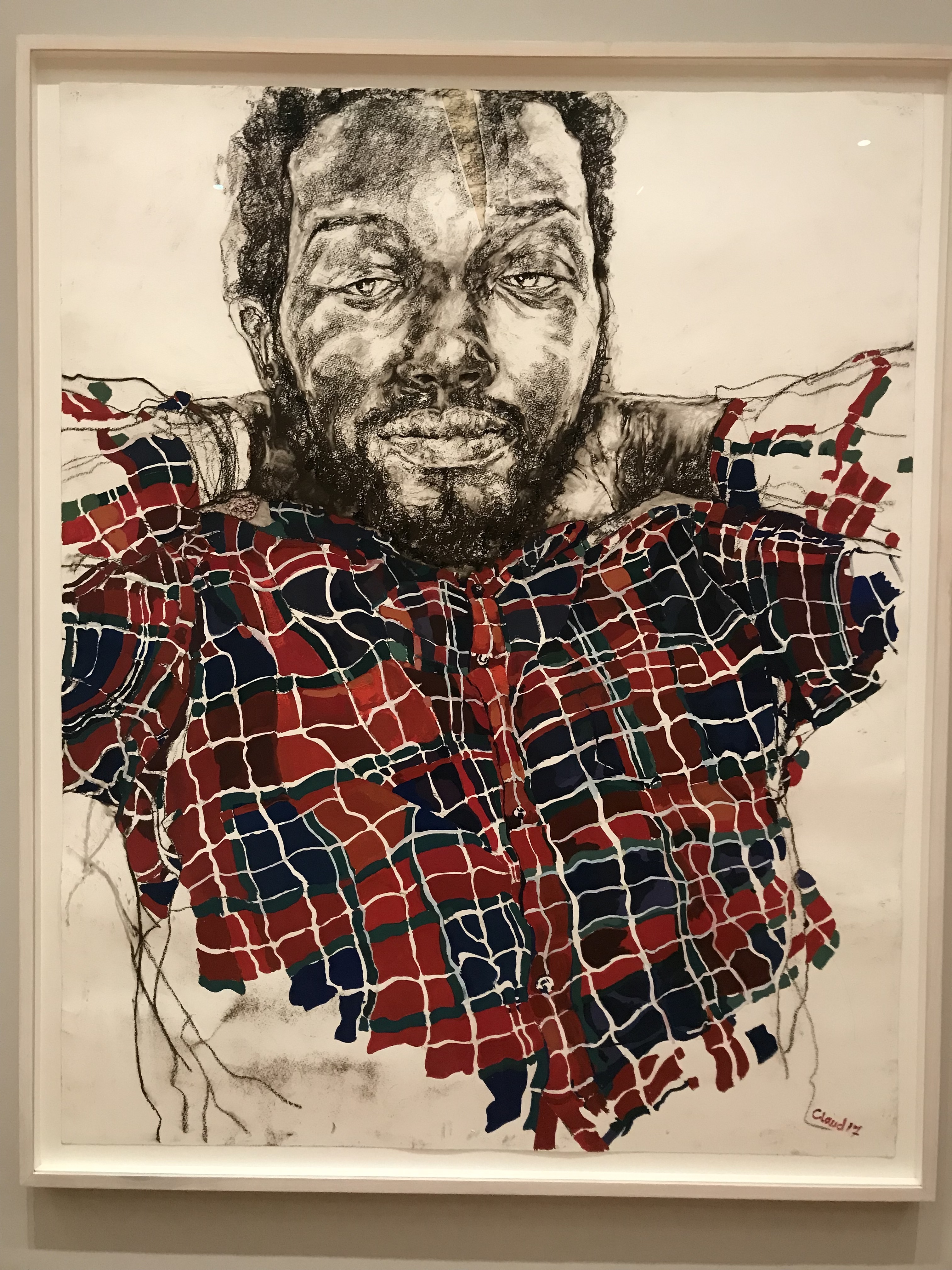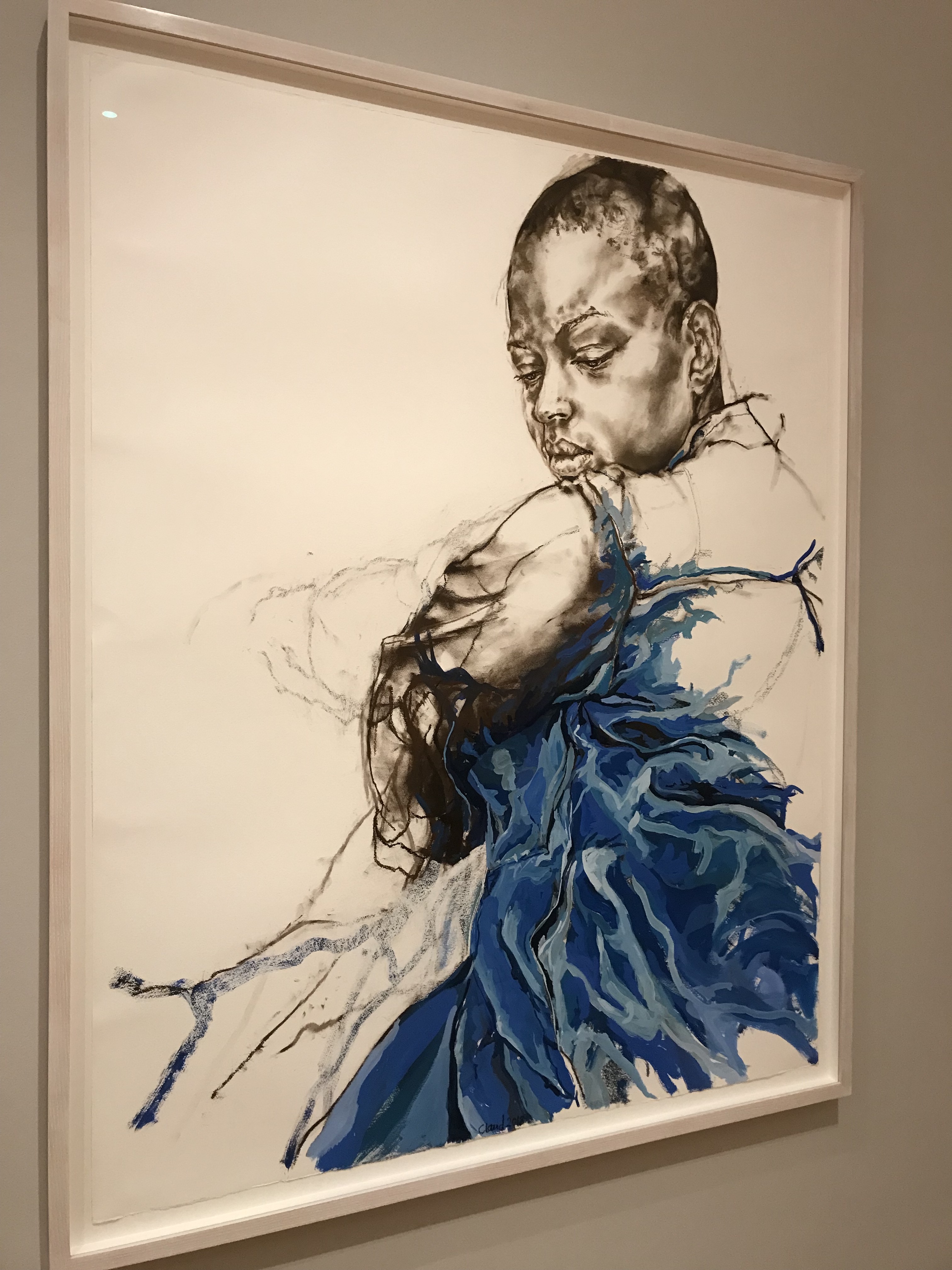Claudette Johnson
The Courtauld Gallery - Somerset House
29th September 2023 - 14th January 2024
By Estelle Simpson
Claudette really asserts her place and vision within the Courtauld, in a show aptly named ‘Presence’, recapturing her muses and realising her own identity with the dignity and boldness her predecessors failed to imagine. The language used to label groups holds equal power to the visual language used to express them. In her interview for Channel 4 news, noting the transition from her and her peers use of the term ‘artist’s of colour’ to ‘black artists’, Claudette’s work presently confronts the histories invested in the muse, giving an unprecedented platform to her individuality and culture. Her works are sensitive and stimulating, with a subtle but insistent evocation of her sitters’ lives.
What is striking in this exhibition, whilst surrounded by the treasures of the Courtauld’s of prominent paintings - prooving both formally inspirational and politically problematic - is the compelling connection found in Claudette’s large drawings. These charcoal renderings have a great presence when standing within the rich history documented by the gallery’s collection. The life and energy captured by oils by revered painters such as Gaugin and Picasso is equalled by the skilful charcoal strokes employed by the contemporary artist. This show defintely asserts the power of drawing, a previously preliminary medium, now holding the space with enthralling potency in the midst of the gems of the paintings archived. People are captured standing tall, their existence emanates beyond the preditermined margins of the artwork.
Replacing canvas for paper, the medium liberates Claudette from the burdening theory and history invested in the late painters’ works, allowing her to question the legacy of these modernist masterpieces with rousing vitality. Particularly in the treatment of the muse, I observe Claudette’s brilliant celebration of the bodies of Black men and women. This is fostered when Claudette finally steps in to subvert the repressive male gaze in ‘Standing Figure with African Masks’, taking from the Modernist’s formality to say something urgetly powerful about the Black female experience. While referencing those such as Picasso, fusing the artist’s dynamic scale and colour with her own expression of individuality, it was pieces such as ‘Kind of Blue’ which caught my attention. This artwork had a great sense of originality despite pulling very evidently from Francis Bacon’s line and citing the rhythm of Miles Davis. Working from a photograph by the South African photographer Peter Magubane, Claudette creates an atmosphere of wistful contemplation accentuated by the young man’s striking features, crafting a composition which replicates these artist’s energy whilst rejecting the absense of black people. Her muses occupy the space, not only breaking down the narrow dimensions previously established by painters who dominated the art world, but also emobodying the genius which existed before her in paintwork which captures the emotional impact ushered by the mystical chords of Davis. This results in artwork which crucially interrogates the past but also celebrates powerful influences.
Witnessing this dance between beautifully smooth and soft marks to raw and textured sweeps of undulating charcoal applied to her models and self portraiture, I can see the artist coolly invoke what resembles the furniture of a Bacon or the classical poses of Seurat and Degas. Adjoined with the freeing energy of her expression, this awareness of tradition ceases to confine the figures of their poise and dignity. Claudette recognises the horrible reality which has succumed the female muse, for too long represented naked and entrenched in passivity and negative sexuality. She responsibly reasserts the sexuality and identity of her subjects, working against this great weight of history, male power, artistic practice, classical literature and mythology which is against us.
Later works continue to excite in the mixed media of pastel and gouache. As she matures we see her become more economic, her work is now full of space and pictorial proficiency. Increasingly minimal and spare, the texture of the skin feels all the more vivid. While formal arrangements and choices of material are vastly diverse in her oeuvre, her artistic cannon is aligned by her powerfully consistent visual politics applied to monumental muses. The monolithic appearance of her models in each piece harmonises the selection on display, yet it is the sense of restlessness which exists beneath their relaxed poses, rendered with a duty to confronting the tonnage of the past, that is incredibly enigmatic.
Claudette Johnson Channel 4 interview here.






